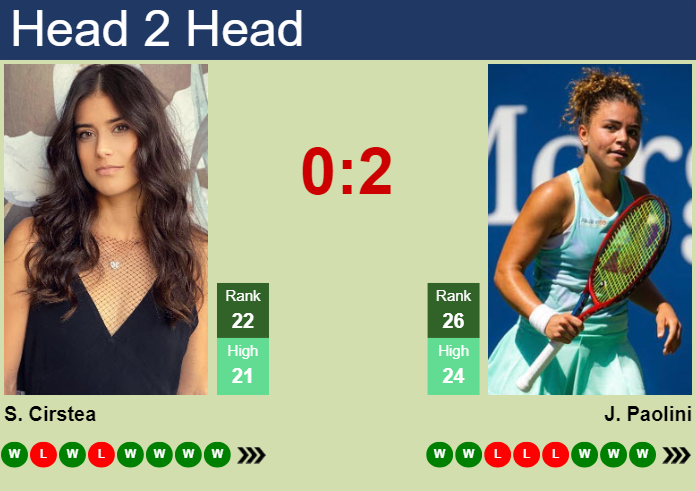The advantage at home is very important in predicting sports results for a variety of reasons.
Affectionate Environment: Teams that play at home are in familiar surroundings, which can boost their comfort and confidence. They are accustomed to the field or court, which is an benefit.
Support of the Fan: Home teams benefit from the fans’ support. This boosts the motivation of fans. The energy generated by the crowd can positively affect the performance of a home team and can even deter visiting teams.
Travel Fatigue
Physical and mental fatigue: Away teams often encounter challenges when traveling that include physical fatigue, as well as interruptions to their routines which could negatively impact their performance.
Long distance travel can cause athletes to lose sleep and be less prepared.
Historical Trends
Consistent Performance: Historical home and away records can identify patterns. Certain teams perform consistently better in their home stadiums, while others have a significant struggle in traveling.
Success at specific venues: Certain teams might have particularly successful records at specific venues due to familiarity or favorable conditions.
Relevance of Statistical Data
When enough games are played, results of away and home matches can be predicted statistically. Over the course of many matches these records can be indicative of the real-time patterns.
Comparative Analysis – Comparing the performance of home and away a team can help to draw out differences and reveal information about its overall consistency and flexibility.
Psychological Factors:
As a result of the expectations fans hold, playing at your home venue can bring with it pressure. Teams need to maintain their performance by coping with this pressure.
Comfort level: Players may feel more relaxed and confident in their home. This could positively impact their performance.
The context of the match
The significance of a match could affect the home and away record. Playoff games or important fixtures, for example, may result in higher performance regardless of the venue.
Home and Away Records The level of your opponent can influence how much importance you place on your record at home and away. Stronger team might be able mitigate home advantage than teams that are weaker.
External Factors
Weather Conditions: When playing outdoor sports, weather can differ significantly from place to place and impact the level of performance. Weather conditions are familiar to teams that play at home.
Surface and Altitude: Variations in playing surfaces (grass, clay, turf) and altitude can impact teams in different ways, usually favoring the home team accustomed to the conditions.
In conclusion records of home and away are vital for predicting sporting results. These records provide insights into a specific team’s performance dynamics. They are also particularly beneficial when they are combined with other variables like the current form of the team, injuries or head-to-head performance results. It’s likely that a thorough analysis including home and travel records will give more precise results. Have a look at the best Tennis Predictions Tonight for site tips including us open womens odds, atp prediction today, fritz prediction, carlos alcaraz prediction, tennis best bets today, top tennis bets today, best tennis bets for today, jannik sinner prediction, australian open predictions, us open predictions today and more.

How Important Is It To Consider Tactical And Strategic Factors When Attempting To Predict Sporting Outcomes?
It is crucial to take into consideration both strategic and tactical aspects in determining the results of sports. This involves the implementation of game strategies that take advantage of a team’s strengths while targeting its weaknesses. These aspects are crucial.
Matchups are often the key to the effectiveness of a tactic. For instance one football team might utilize a fast full-back in opposition to the team with the winger.
Adapting the Conditions The teams can adapt their plans according to weather conditions as well as playing surfaces and venues, which maximizes their potential.
Flexibility and adaptability
In-game adjustments: Teams that can adapt their tactics during the course of a game are usually more successful. It may be necessary to switch tactics or change offensive and defensive strategy in accordance with the flow of games.
Teams that counteract the opponent’s strategies are more effective. Being aware of and anticipating their strategies of their adversaries can help them overcome their strengths.
Offensive and defensive strategies:
Defensive Organization – Strong defensive tactics such as high pressing or deep defence can assist in stifling your opponent’s offense. Teams with well-organized defensive systems tend to concede less goals.
Varying Attacking Strategies: Diverse attacking strategies, such as quick counterattacks, possession-based play or set-piece specialization can degrade even the most well-organized defenses.
Team roles and players:
Clarity in Roles: Each player must be aware of their role within the team. This is crucial to ensure that the team is able to execute the overall plan.
Key Players: It could be important to use key players as they are the ones who have the most impact. This might include a midfielder who plays the role of a playmaker or an attacker who is an ideal target.
Historical and Situational analysis:
Past Meetings: Looking back at the way teams have approached tactically prior encounters can give insight into possible game plans and outcomes.
Current Form. The tactical considerations must be adjusted to match the current practices of the team and the players. The way the team is structured could have changed, and a strategy from the past that has worked may need to change.
Psychological impact:
Confidence and Preparation: Well-prepared teams usually have clearer strategies. They also perform with more confidence. This psychological edge is crucial in tight matches.
Effective tactics can frustrate the adversary and force them to make mistakes or lose motivation. They can be crucial.
Sport-Specific Considerations:
Soccer: Formations, such as 3-4-3, 4-3-3, and so on are essential. Also, set-pieces and pressing styles play a crucial role. The tactic you choose can affect the way that midfield players are controlled, how wide areas are utilized, and the capacity to breach defensive lines.
Basketball: It is important to have a strategy which includes zones defense (vs. man-toman) and tempo of play, and offensive plans, e.g. pick-and-roll or isolation plays.
Cricket: Bowling, field positions and batting rotations can affect the outcome of games especially when played in different formats.
Influence of the Coach and Manager
Tactical Understanding: A coach’s ability to understand the game and devise and execute effective tactics can often be a major element in determining whether a particular team will succeed.
Team Buy-In : How well players comprehend and accept the strategy will impact its implementation. Using strategy in a consistent manner is key.
To conclude, it’s important to consider the tactical and strategic aspects in predicting the outcomes of sports. They affect every aspect of the game including individual performance, to team dynamics. If combined with an analysis of form, injuries, and other factors an knowledge of tactics gives a comprehensive basis for accurate predictions. Follow the top rated Grand slam tennis predictions news today for site examples including oddsportal tennis, free tennis picks, gauff prediction, lwos tennis predictions, tennis prediction guru, tennis dfs picks, daily tennis picks, iga swiatek prediction, gauff prediction, aus open predictions and more.

What Is The Significance Of Market Movements And Odds In Predicting The Outcome Of A Sporting Event.
They are useful in predicting sporting results but their value depends on a variety of aspects. The following are the reasons:
Afficient market: Betting markets are considered to be efficient by aggregating the collective opinions and experience of a variety of bettors. The odds reflect of a consensus regarding the most probable outcome.
Information incorporation. The market for odds incorporates information that is updated in real-time including team news, or weather forecasts.
Indicator Confidence
Probability Evaluation: Odds show the probability that betting exchanges assign to each outcome. Higher odds mean a greater chance.
Market Sentiment: Significant movements in the odds, like sudden shifts or steady changes, could indicate shifts in market sentiment, reflecting new information or changing opinions about the game.
Risk Assessment:
Bookmakers adjust odds in order to ensure they are in a balanced position and control risk. Understanding these changes can reveal how bookmakers perceive the outcomes of the game and what risks they face.
Arbitrage: If odds are different among bookmakers, arbitrage is possible. Bettors gain from placing bets on different outcomes.
Influence on public perception:
Public Perception. Market odds influence public perception. The media’s coverage can influence expectations, and affect the mood of a team or player.
Self-Fulfilling Proverb: In high-profile matches featuring teams that are heavily favored the increased amount of betting can result in more shifts of odds and may even strengthen the anticipated outcome.
Correlation The statistical term:
Accuracy indicators: In the majority of instances, the odds in the market tend to align well with the probability that outcome will occur, particularly when the market is liquid and well regulated.
Calibration: Comparing the market’s odds to predictions from statistical models will help determine the accuracy of both models as well as detect any discrepancies.
The Market Bias:
Overreaction: Markets can overreact to certain events, like injuries to key players or team performance in recent times which can result in a dramatic movements in the odds.
Bookmakers will often underrate the chance that an underdog team will prevail, especially in high-profile games. This leads to the opportunity to make money betting.
External Influences
Manipulation Risks: The betting markets could be influenced by factors unrelated to the actual game such as rumors, speculation, or attempts at match-fixing. Knowing these risks is crucial in the analysis of odds fluctuations.
Regulatory Changes in the regulatory system. Any changes to gambling regulations or market dynamics can affect the flow of odds and market efficiency.
Contextual Analysis:
Complementary tool. Market odds are an excellent tool to use together with other variables in making predictions. This includes team structure injury, player injuries, and tactical considerations.
Market odds are easily integrated into models. They can either be used as inputs or as benchmarks to assess the model’s performance.
The market’s chances and trends are a reflection of the wisdom and collective experience of the betting industry and are therefore important to consider when attempting to predict sporting results. Knowing market dynamics can provide an important insight into sports events. While they aren’t completely accurate, other elements should also be considered.